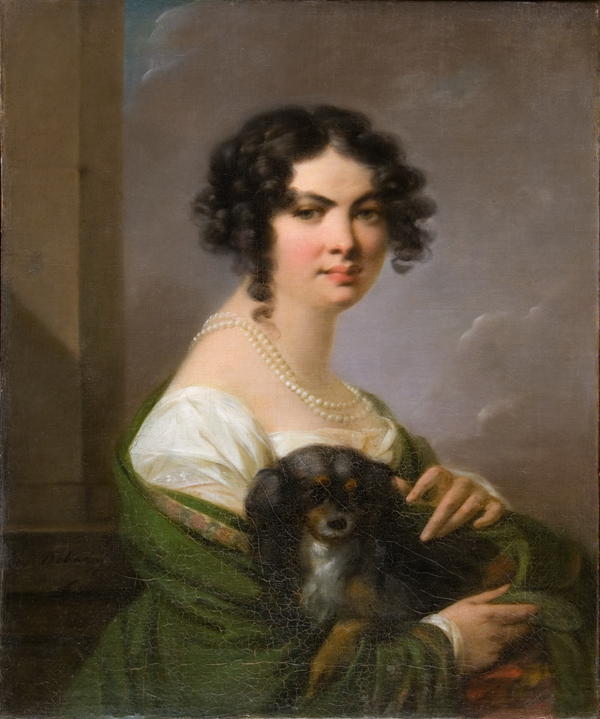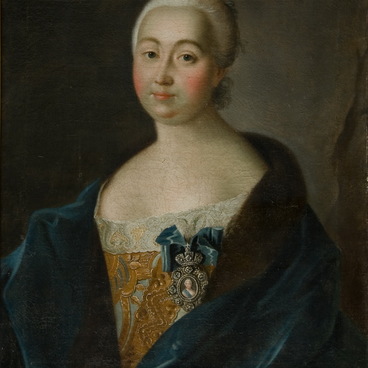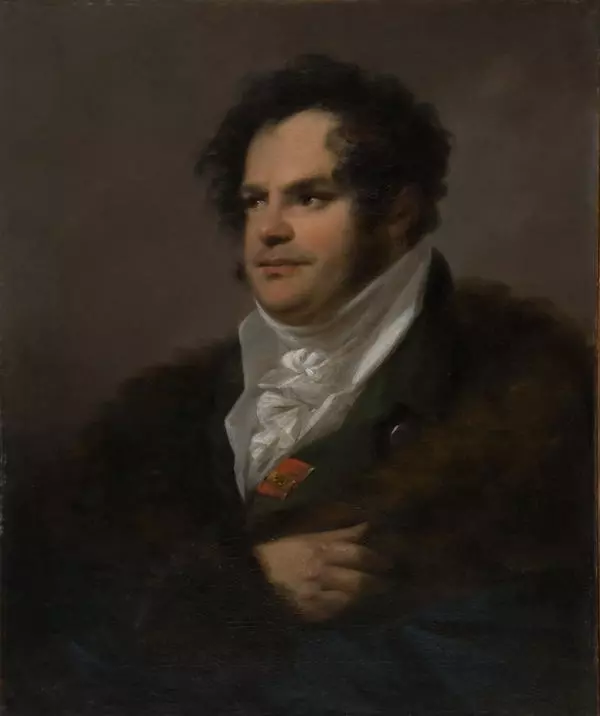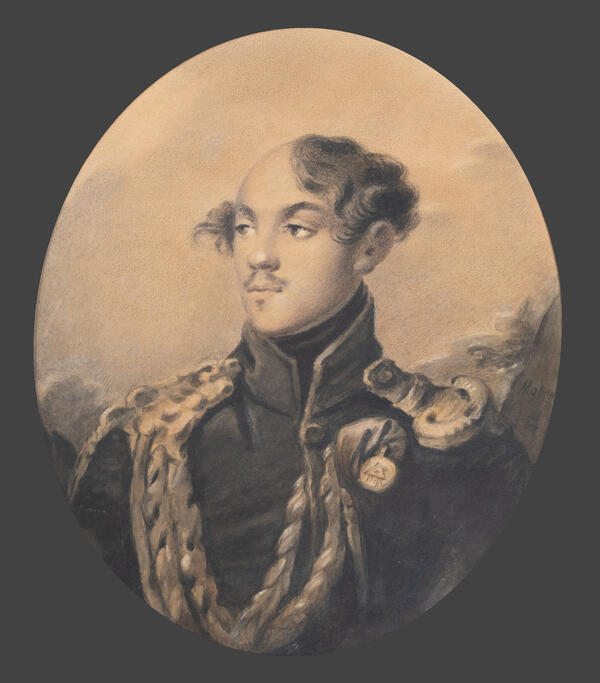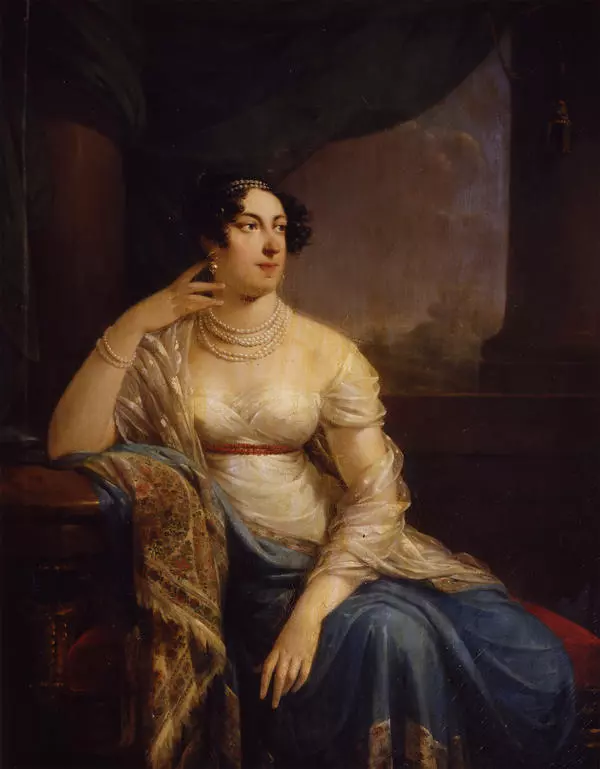Portrait of Prascovia Timofeyeva was created by an Italian artist of German origin Alessandro Molinari. The contemporaries valued him as high as one of the best Russian painters Orest Kiprensky who made portraits of Russian nobility.
Portrait of Timofeyeva P.A.
Время создания
1813 (?)
Размер
69,5x57,5 cm
Техника
canvas, oils
Коллекция
Выставка
5
Открыть в приложении#2
#3
Alessandro Molinari was born in Germany. At the age as young as 15 he studied in the Berlin Academy of Arts. The young artist started his practice in painting in Rome, and later he worked in other European cities as well.
#5
In 1806, 34-year old Alessandro Molinari came to Russia. He became a tutor of drawing in the family of count Dmitry Buturlin — the latter lived with his wife in the estate Belkino of the Kaluga region. In 1812, the painter moved to St. Petersburg and soon became one of the most popular artists in the capital. His clients were representatives of the upper circle and the imperial family. The painter created the portraits of Emperor Alexander I, prince Michael Vorontsov, lithographer Christian Reder and others.
#6
In 1813, Alessandro Molinari painted the portrait of Prascovia Timofeyeva, the younger daughter of count Artemiy Vorontsov. Maternally she was a relation to Alexander Pushkin. There has remained her correspondence with the poet’s sister, in which she was the first to inform about the poet’s duel with Georges d’Anthes.
#7
Prascovia Timofeyeva graduated from The Smolny Institute for Noble Maidens. At the age of 27, she married a Tambov landowner Alexander Timofeyev. Their marriage was regarded as a mesalliance — they said that the match was arranged because of her father Artemiy Vorontsov’s bankruptcy. As a dowry, Timofeyeva got the Vorontsovka estate and the family portrait gallery.
#8
The work of Molinari is a part of the conjugal portrait to the image of her spouse Alexander Timofeyev. The picture was painted on the occasion of their marriage in 1813. Timofeyeva is depicted with a typical hairdo of an aristocrat of the first half of the XIX century, the fashion of which had come from France. Also very fashionable at that time were cashmere shawls — they were put on open dresses in the style of Empire.
#9
In the portrait of Timofeyeva Alessandro Molinari employed his favourite method: to create ‘light from inside’ the painting he used watercolours and whitewash. They enhanced the visual effect, and the features of the model became soft.
#10
Ministry of Culture of the Russian Federation
читать дальшескрыть
00:00
00:00
1x
Portrait of Timofeyeva P.A.
Время создания
1813 (?)
Размер
69,5x57,5 cm
Техника
canvas, oils
Коллекция
Выставка
5
Открыть в приложении
Поделиться

